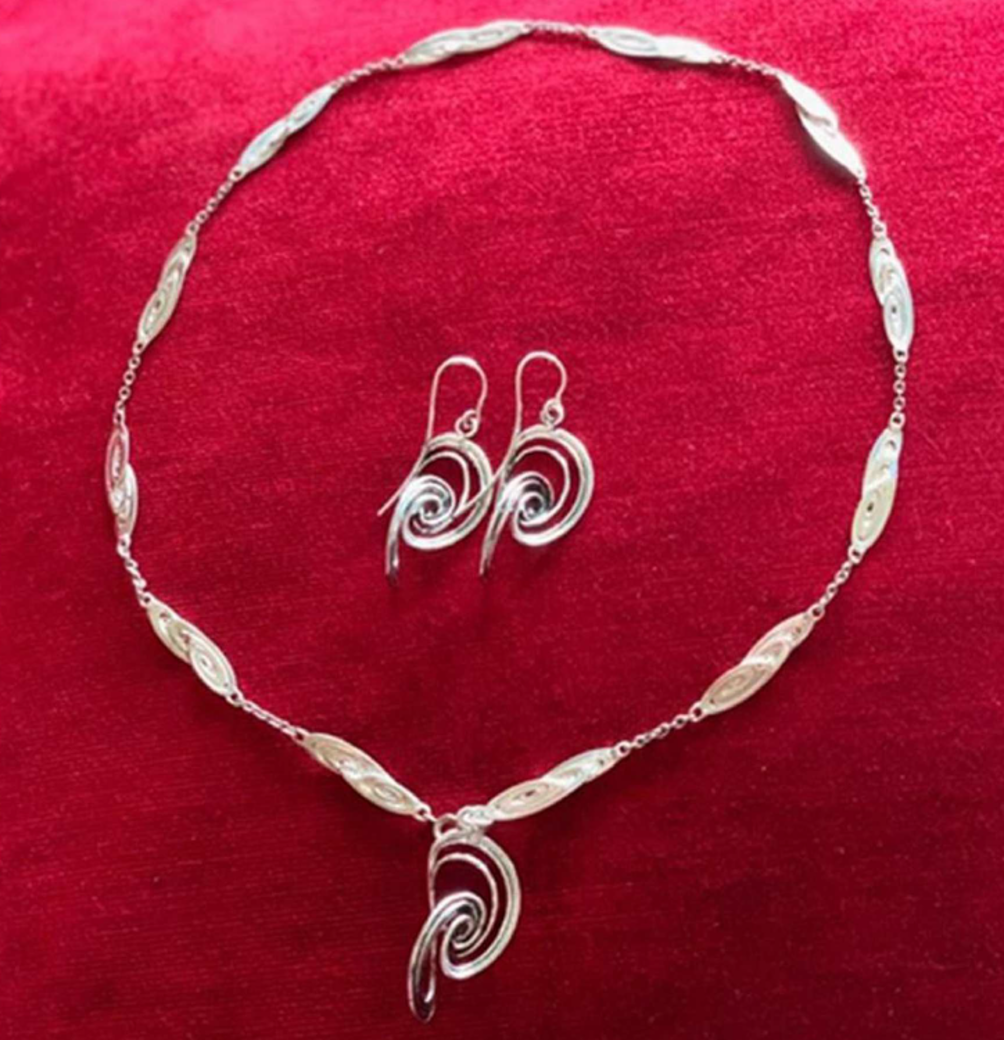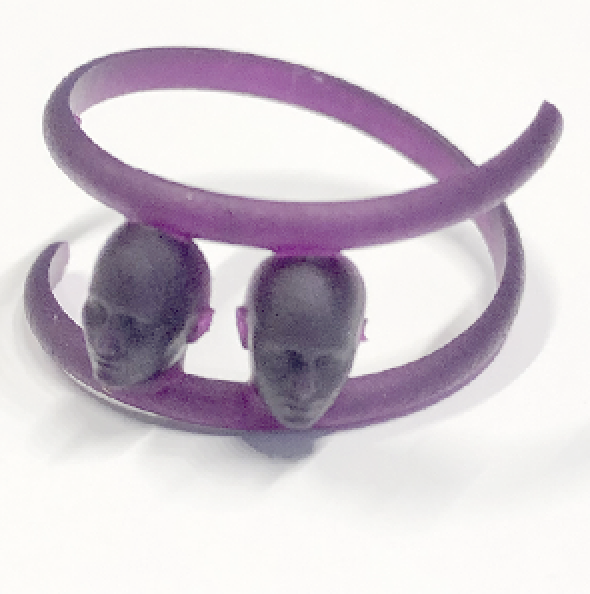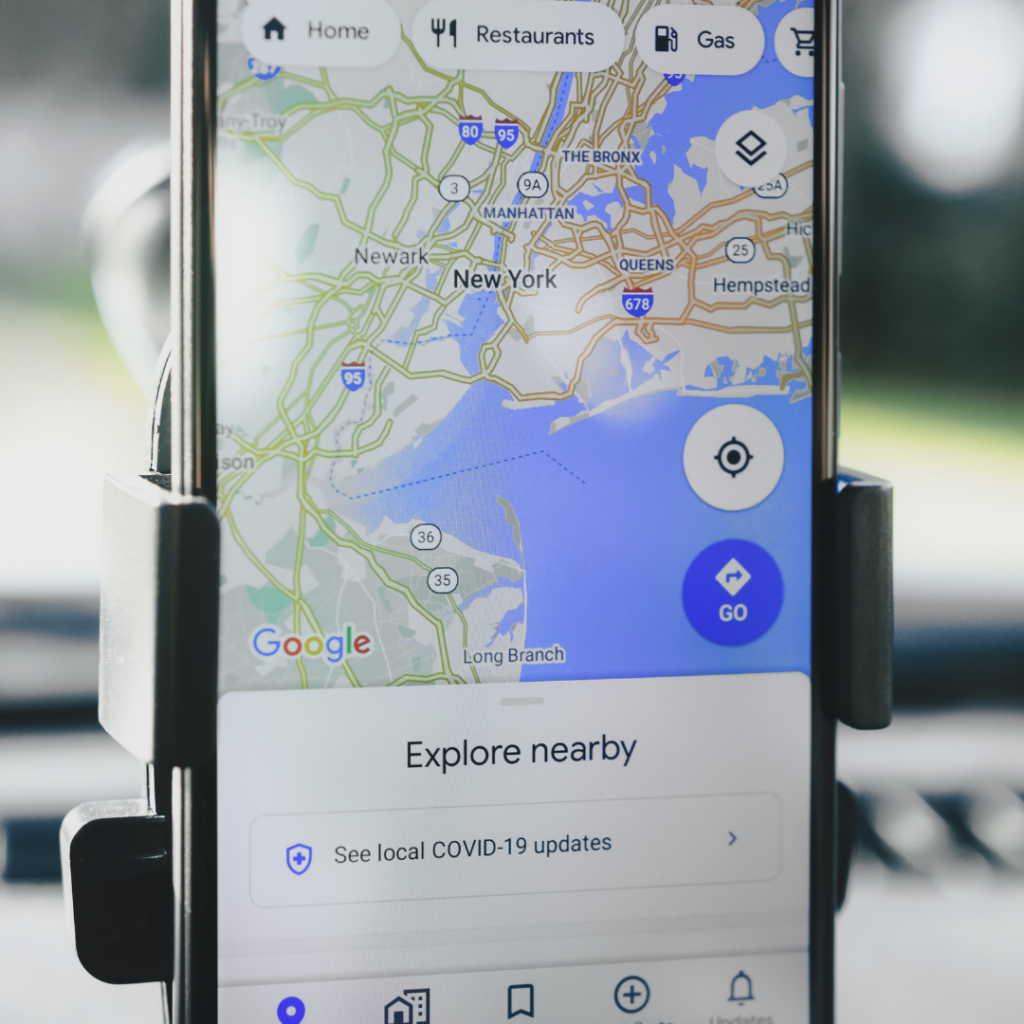Progetti
Chaotic Design
Articoli
Manifattura Digitale
Jewels from chaos: A fascinating journey from abstract forms to physical objects

Jewels from chaos: A fascinating journey from abstract forms to physical objects
THE INTERNATIONAL JOURNAL OF ADVANCED MANUFACTURING TECHNOLOGY
Francesca Bertacchini, Pietro S Pantano, Eleonora Bilotta
An intellectual journey that began with the discovery of strange attractors derived from Chua’s circuit, their translation into physical shapes by means of 3D printers, and finally, to the production of jewelry is presented. After giving the mathematical characteristics of Chua’s circuit, we explain the chaotic design process, used for creating jewels, providing specifications of the used methodological approach, for its reproduction.
The development and application of an optimization tool in industrial design

The development and application of an optimization tool in industrial design
International Journal on Interactive Design and Manufacturing (IJIDeM)
Francesco Demarco, Francesca Bertacchini, Carmelo Scuro, Eleonora Bilotta, Pietro Pantano
Designers are identified, in industry 4.0, as the professional figures that have to design well performing new object. In order to do this, it is necessary to take into account a series of properties called design objectives. Often the structural problem of new design is underestimated or even not considered. This can be a real problem because this objective is in competitive and in contrast with other design objectives. So, this can bring to substantial change in a design in the final phase and sometimes to the complete change. In this paper is presented an optimization workflow that adopt a Multi Objective Optimization engine so called “Octopus” and Karamba3D, that is a Finite Elements (FE) plug-in, typically used in structural simulations, these extensions run in a software: Grassopper3D, that is a parametric design tool. The workflow allows designers to explore a large range of solutions and at the same time
Algorithms for jewelry industry 4.0

Algorithms for jewelry industry 4.0
Numerical Computations: Theory and Algorithms: Third International Conference, NUMTA 2019, Crotone, Italy, June 15–21, 2019, Revised Selected Papers, Part I 3
Francesco Demarco, Francesca Bertacchini, Carmelo Scuro, Eleonora Bilotta, Pietro Pantano
The industrial and technological revolution and the use of innovative software allowed to build a virtual world from which we can control the physical one. In particular, this development provided relevant benefits in the field of jewelry manufacturing industry using parametric modeling systems. This paper proposes a parametric design method to improve smart manufacturing in 4.0 jewelry industry. By using constrained collection of schemata, the so called Direct Acyclic Graphs (DAGs) and additive manufacturing technologies, we created a process by which customers are able to modify 3D virtual models and to visualize them, according to their preferences.
Shaping the aesthetical landscape by using image statistics measures

Shaping the aesthetical landscape by using image statistics measures
Acta Psychologica
F Bertacchini, PS Pantano, E Bilotta
Aesthetics and evaluation of objects is becoming increasingly important in contemporary society. Although there have been many studies on processes related to computational aesthetic, a clear formalisation and visualization of the aesthetic field is still lacking. In this paper, we present a set of Machine Learning techniques and mathematical methods to extract the most important features related to aesthetical evaluation, thus making this process automatic, without the human intervention. The techniques are then applied to a sample of 83 images of triangles, produced by artists. The results of the empirical method provide a series of measurements that allow the extrapolation of mathematical aesthetic characteristics of the images and their location in the aesthetic space.
Modeling and recognition of emotions in manufacturing

Modeling and recognition of emotions in manufacturing
International Journal on Interactive Design and Manufacturing (IJIDeM)
Francesca Bertacchini, Eleonora Bilotta, Michela De Pietro, Francesco Demarco, Pietro Pantano, Carmelo Scuro
New consumer needs have led industries to the possibility of creating virtual platforms where users can customize products by creating infinite combinations of different results. The dynamic and flexible evolution of factories is guaranteed by the introduction of new technologies such as robotization and 3D printers, recognized as two of the pillars of Industry 4.0. The main aim of this paper is to achieve a workflow for the creation and implementation of personalised jewellery based on faces with different emotional expressions.
Increase the accuracy in direct 3D-Printing of mathematical Patterns for smart manufacturing

Increase the accuracy in direct 3D-Printing of mathematical Patterns for smart manufacturing
2022 IEEE International Workshop on Metrology for Industry 4.0 & IoT (MetroInd4. 0&IoT)
Francesca Bertacchini, Eleonora Bilotta, Francesco Demarco, Pietro Pantano, Carmelo Scuro
Mathematics provides a virtually infinite library of shapes and patterns of incomparable beauty which, thanks to the automation of production processes, can be used in the production of design objects. In particular, reaction-diffusion patterns, which simulate the distribution of chemical substances, allow a large number of different patterns to be generated by varying the input parameters. These patterns can be used in the customization of objects, realized thanks to additive manufacturing (3D printers). This technique allows very complex shapes and unique pieces to be physicalized in a short space of time.
Preliminary study of an innovative method to increase the accuracy in direct 3D-Printing of NURBS objects

2021 IEEE International Workshop on Metrology for Industry 4.0 & IoT (MetroInd4. 0&IoT)
Francesca Bertacchini, Eleonora Bilotta, Domenico Luca Carnì, Francesco Demarco, Pietro Pantano, Carmelo Scuro, Francesco Lamonaca
Digital innovation of the last few decades has meant that the Internet of Things paradigm (IoT) is increasingly applied to new sectors of the industry, such as rapid prototyping and 3D printers. This has allowed the digitization of production processes and the customisation of products through the Internet by users and consumers. A first analysis has highlighted that the last generation 3D printers have a resolution higher than the final achieved accuracy evaluated by comparing the CAD model and the printed object. The goal is to study the whole process, detect the operations that degrade the accuracy and reduce their influence. This study has highlighted that the accuracy degradation is in the discretization of the CAD model that is required by the printing platforms. In this paper, an innovative method reducing the effect of the discretization is proposed and preliminary results are shown to assess its effectiveness.
Multi-objective optimization and rapid prototyping for jewelry industry: methodologies and case studies

Multi-objective optimization and rapid prototyping for jewelry industry: methodologies and case studies
THE INTERNATIONAL JOURNAL OF ADVANCED MANUFACTURING TECHNOLOGY
Francesca Bertacchini, Eleonora Bilotta, Francesco Demarco, Pietro Pantano, Carmelo Scuro
The new research and technologies that have ensured the digitalization of industries and the introduction of smart manufacturing are still characterized by poorly studied processes. In particular, communication and integration between different platforms, which form the ecosystem of smart manufacturing, are subject to various communication problems. The research conducted and propounded in this article is based on the implementation of an integrated manufacturing system that involves parametric modeling, optimization, and additive manufacturing. The ecosystem analyzed guarantees communication between IT platforms such as Rhino-Grasshopper, for parametric modeling, and PreForm, slicing software for Formlab’s stereolithographic 3D printers.
Turismo
Probability-density risk-maps for supporting tourism during emergencies

Probability-density risk-maps for supporting tourism during emergencies
Annals of Tourism Research
Eleonora Pantano, Daniele Scarpi, Virginia Vannucci, Eleonora Bilotta, Pietro Pantano
Probability-density risk-maps for supporting tourism during emergencies — University of Bristol Skip to main navigation Skip to search Skip to main content University of Bristol Home University of Bristol Logo Help & Terms of Use Home Profiles Research Units Research Outputs Projects Student theses Datasets Activities Prizes Facilities/Equipment Search by expertise, name or affiliation Probability-density risk-maps for supporting tourism during emergencies Eleonora Pantano, Daniele Scarpi, Virginia Vannucci, Eleonora Bilotta, Pietro Pantano
Machine learning and points of interest: typical tourist Italian cities

Machine learning and points of interest: typical tourist Italian cities
CURRENT ISSUES IN TOURISM
S. Giglio, F. Bertacchini, E. Bilotta, P. Pantano
This research examines the relationship between human mobility and tourist attractions through geo-located images provided by Flickr users. Cluster analysis is used to identify clusters surrounding points of interest (POIs), highlighting the role of social media in POIs’ recommendation process in the tourism field. The study aims to promote machine learning as a useful tool for human behavior research.
Industry 4.0 technologies in tourism education: Nurturing students to think with technology

Industry 4.0 technologies in tourism education: Nurturing students to think with technology
JOURNAL OF HOSPITALITY, LEISURE, SPORT & TOURISM EDUCATION
E. Bilotta, F. Bertacchini, L. Gabriele, S. Giglio, P. S. Pantano, T. Romita
This text discusses the impact of Industry 4.0 on tourism and the need for students to be trained on its techniques. It highlights the skills necessary to develop an academic curriculum for Tourism Science students, including data acquisition, analysis using machine learning techniques, and designing communication systems.
Branding luxury hotels: Evidence from the analysis of consumers’“big” visual data on TripAdvisor

Branding luxury hotels: Evidence from the analysis of consumers’“big” visual data on TripAdvisor
JOURNAL OF BUSINESS RESEARCH
S. Giglio, E. Pantano, E. Bilotta, T. C. Melewar
This paper uses machine learning to evaluate consumers’ visual data on TripAdvisor and understand their perception of luxury hotel brands. The analysis of 7,395 pictures highlights the significant impact of non-textual elements on the hotel experience, specifically interior features of the hotel rooms and restaurants. The study shows how big data analytics and machine learning can aid in brand management strategies for luxury hotels by monitoring social media and analyzing visual data to understand consumer perceptions.
Using social media to identify tourism attractiveness in six Italian cities

Using social media to identify tourism attractiveness in six Italian cities
TOURISM MANAGEMENT
S. Giglio, F. Bertacchini, E. Bilotta, P. Pantano
This paper investigates the attractiveness of tourism sites by analyzing users’ behavior on social media. The study uses geo-tagged photos from six Italian cities on Flickr and employs machine learning models and Mathematica for data analysis. The results show the effectiveness of the methodology in providing place and user information and creating predictive models for tourism scenarios. The study highlights the potential of social data analysis in formulating marketing strategies for tourism.
Shopping with a robotic companion

Shopping with a robotic companion
Computers in Human Behavior
F. Bertacchini, E. Bilotta, P. Pantano
The paper describes a cognitive robotic shopping assistant designed to study how human-robot interaction is changing shopping behavior in smart stores. The robot uses machine learning to acquire and express social cues, influencing the customer’s buying decision. By combining social robotics and machine learning, the potential for robotics to assist people in real-life situations increases, with gentle customer acceptance of advanced technologies.
Beni Culturali
Propagation of Elastic Waves in Homogeneous Media: 2D Numerical Simulation for a Concrete Specimen

Propagation of Elastic Waves in Homogeneous Media: 2D Numerical Simulation for a Concrete Specimen
Mathematics
Alì, G., Demarco, F., & Scuro, C
This paper addresses the theoretical foundation of a localization method for crack detection
in a concrete sample based on the time of arrival of the elastic wave generated by the crack
formation to a group of sensors positioned on the boundary of the sample. The equations of
motion for the elastic waves are carefully presented, including a body force term which
accounts for the sudden formation of a crack. Then, a localization method based on the
detection of acoustic emissions, and specifically on their arrival times, is described.
Fictile tubules: A traditional Mediterranean construction technique for masonry vaulted systems

Fictile tubules: A traditional Mediterranean construction technique for masonry vaulted systems
Construction and Building Materials
Scuro, C., Tiberti, S., Codispoti, R., Milani, G., & Olivito, R. S.
This paper addresses the theoretical foundation of a localization method for crack detection
in a concrete sample based on the time of arrival of the elastic wave generated by the crack
formation to a group of sensors positioned on the boundary of the sample. The equations of
motion for the elastic waves are carefully presented, including a body force term which
accounts for the sudden formation of a crack. Then, a localization method based on the
detection of acoustic emissions, and specifically on their arrival times, is described.
Experimental and numerical analysis on masonry arch built with fictile tubules bricks

Experimental and numerical analysis on masonry arch built with fictile tubules bricks
Measurement
C. Scuro, F. Lamonaca, R. Codispoti, DL Carnì, RS Olivito
Numerous archaeological discoveries made all over the Mediterranean area have
highlighted the use of a particular building technique based on fictile tubules bricks. This
building technique was commonly used for the building of walls and domes in thermal baths
and masonry kilns since the Roman Empire. This paper investigates the behavior of
structures employing such technology via experimental tests and numerical analysis.
Preliminary Study of a Neural Network Procedure for the Timely Detection of the Collapse of Historical Cultural Heritage Structures

Preliminary Study of a Neural Network Procedure for the Timely Detection of the Collapse of Historical Cultural Heritage Structures
2022 IEEE International Workshop on Metrology for Living Environment
Wang, P., Scuro, C., Demarco, F., Carnì, D. L., Lamonaca, F., Alì, G., & Milani, G
The protection and preservation of buildings of historical and cultural heritage is often only
guaranteed by a type of ordinary or extraordinary maintenance. The constructions are
subject to restoration work when damage is advanced or partial collapses have occurred. In
recent years, modern technology and research have ensured the development of
continuous monitoring through structural health monitoring (SHM) systems. SHMs allow the
real time acquisition of different physical quantities that are stored in a cloud.
Internet of Things (IoT) for masonry structural health monitoring (SHM): Overview and examples of innovative systems

Internet of Things (IoT) for masonry structural health monitoring (SHM): Overview and examples of innovative systems
Construction and Building Materials
Scuro, C., Lamonaca, F., Porzio, S., Milani, G., & Olivito, R. S.
The main aim of using the IoT paradigm is related to the possibility of a connectivity
extension of several common SHM devices by means of Internet. The connected devices are
thus able to transmit and process data, guaranteeing new scenarios in the design of
acquisition systems in different fields of science and engineering.
Development of a structural health monitoring system with IoT smart nodes based on mathematical model of inverted pendulums equipped with accelerometers

Development of a structural health monitoring system with IoT smart nodes based on mathematical model of inverted pendulums equipped with accelerometers
International Journal of Masonry Research and Innovation
Scuro, C., Alì, G., Demarco, F., & Porzio, S.
For centuries, the Italian historical and cultural heritage has been subject to seismic events that have damaged its integrity. The only way to preserve historic centres is to monitor their health through the integration of the traditional structural health monitoring (SHM) system. The aim of the work is to extend the monitoring of historical masonry buildings using an innovative approach based on the simultaneous use of mathematical and finite element models to detect a reduced number of points to be monitored and establish the maximum stress that they can withstand before considering the whole structure in danger.
Seismic analysis of an ancient masonry palace through two simplified numerical methods

Seismic analysis of an ancient masonry palace through two simplified numerical methods
International Journal of Masonry Research and Innovation
Scuro, C., Olivito, R. S., Lamonaca, F., Carnì, D. L., & Angotti, C.
The aim of the paper is to study the reliability of simplified numerical models (SNMs) for seismic structural assessment identification accuracy. The advantages of using SNMs with respect to the traditional finite element approaches come from their commercial availability, the structural templates already implemented, and the reduced computational burden that allow the evaluation of the seismic structural assessment in some minutes instead of days. But the drawback to using SNMs alone in the study of large-scale structures is the crude accuracy justified by the simplifications they assume.
Analysis of a nonlinear model arising in chemical aggression of marble

Analysis of a nonlinear model arising in chemical aggression of marble.
International Journal of Masonry Research and Innovation
Alì, G., Torcicollo, I., & Scuro, C.
We present a simple model describing the chemical aggression undergone by calcium
carbonate rocks in the presence of acid atmosphere. A large literature is available on the
deterioration processes of building stones, in particular in connection with problems
concerning historical buildings in the field of cultural heritage. It is well known that the
greatest aggression is caused by sulphur dioxide and nitrate.
